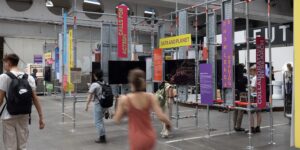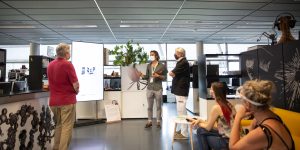Daniel Rammer
-

Futurelab Night Performances 2023
Futures Report @ Ars Electronica Festival
Just as in previous years, the Futurelab Night Performances were one of the highlights of the Ars Electronica Festival 2023. This “Artistic Futures Report”, delivered live on Saturday evening in the Deep Space 8K, was a great opportunity to experience the Futurelab’s multifaceted work in concentrated form and up close.
-

Deep Sync
Sharing Heartbeats in Immersive Space
Deep Sync creates an interactive playground for sound and visuals in the immersive Deep Space 8K environment. At the center of attention is the heartbeat of the visitors, which is artistically represented and thus has an effect on the entire group.
-
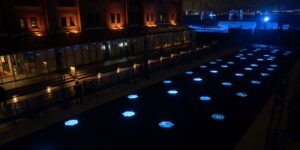
Stream of Hope
Large-Scale Fluxel Performance in Japan
Ars Electronica Futurelab’s Fluxels, a scalable swarm of ground robots equipped with hexagonal LED displays, brought about a new language of visual expression. Stream of Hope in Osaka and Yokohama showcased their versatility at large-scale events.
-
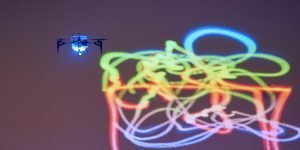
Space Ink
Three-Dimensional Drawings With Drones
What if we can draw in any space with a pen? This question is at the heart of Space Ink, where tablets and drones are brought together to create large-scale works in three-dimensional space using light and color.
-
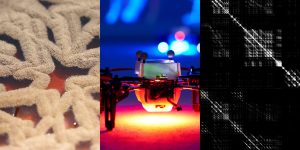
Future Ink
In Creativity, Where Is My Soul?
The Future Ink Project is a research project to explore the future of creativity from all aspects of ink. Various prototypes were developed in the course of Future Ink, from using tablets and drones to paint to visualizing brainwaves and body signals as immersive three-dimensional ink.
-

Spotless
An Artifact-Bound, Augmented-Reality Powered Social Interface
Spotless’s goal is to empower users to utilize arbitrary objects as communication channels. The basic concept is to connect objects or “artifacts” by the means of their visual equality.
-

CoBot Studio
As humans and robots work together ever more closely, their joint success is linked to certain preconditions: How do you create safe working environments? How can we increase the acceptance of robots in everyday work? And how do you communicate with a colleague who consists only of a gripper arm?
-
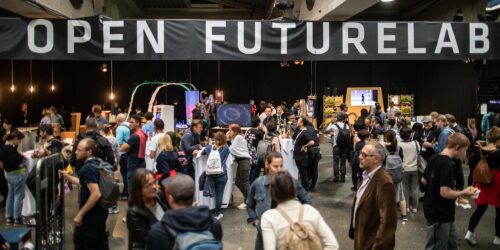
Open Futurelab 2019
The festival site at POSTCITY in Linz was used as a stage for Open Futurelab until 2019. Created with the Japanese public broadcasting company NHK, Media Platz was a prototype of an open media plaza consisting of cardboard and high-resolution screens, which was used as a forum for public debate. Various panel discussions took place…
